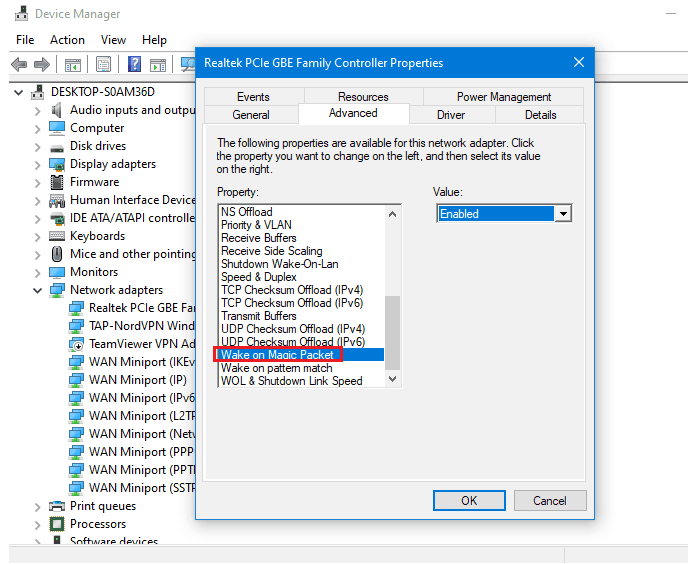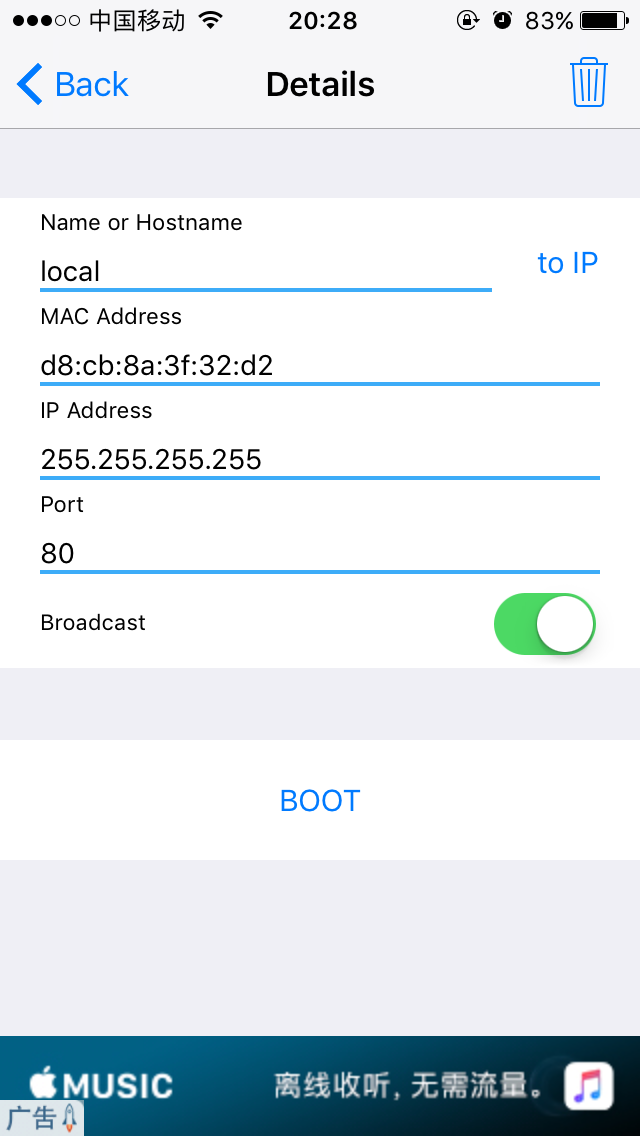

- #WOL WAKE ON DIRECTED PACKET WAKE ON MAGIC PACKET MAC OS X#
- #WOL WAKE ON DIRECTED PACKET WAKE ON MAGIC PACKET INSTALL#
- #WOL WAKE ON DIRECTED PACKET WAKE ON MAGIC PACKET ZIP FILE#
#WOL WAKE ON DIRECTED PACKET WAKE ON MAGIC PACKET MAC OS X#
Right click “miniWOL.exe” and choose “Create Shortcut” – this will create a shortcut, most likely on your Desktop.įor MacOS X, this has been tested with Mac OS X 10.11 (El Capitan), but I suspect it will work on any Intel based Mac.
#WOL WAKE ON DIRECTED PACKET WAKE ON MAGIC PACKET ZIP FILE#
Extract “miniWOL.exe” from the ZIP file and place it in the new folder “C:\Program Files (x86)\miniWOL”.Create a folder “miniWOL” in “C:\Program Files (x86)”.
#WOL WAKE ON DIRECTED PACKET WAKE ON MAGIC PACKET INSTALL#
I prefer to install my applications in the proper folders so, I’d follow these steps: The easiest way to install this would be just running it from your Downloads folder or Desktop, but it can be done a little cleaner. MiniWOL is a 32 bit application, which should work on any Windows version, starting with Windows XP and up. Installation of miniWOL is straight forward. MiniWOL has been reviewed by SoftPedia as safe. Since this will be different for most devices, either consult the manual of your device, read an online guide like this one at How-to-Geek, or consult Google. Quite often you’d need to do some settings in the “BIOS” of your computer, and do some settings in the operating system as well.Ĭertain devices, like most NAS devices, make it a little easier by offering a simpel “WOL ON/OFF” function. Enabling Wake On LAN on your Network Deviceīefore we can wake up a network device with WOL, you will need setup this device to do so. See also these 2 Microsoft Technet articles: About Subnet-Directed Broadcast and Choose Between Unicast and Subnet-Directed Broadcast for Wake On LAN. This is unfortunate, since broadcasts aimed at a specific device (unicast) appears more secure than subnet-directed broadcast. This technique does seem to be required for some devices to work with WOL. Note : As of version 1.2, miniWOL supports subnet directed broadcasting.

Naturally, you can guess that this is not 100% fool proof, but it’s better than nothing, and in your local network (at home or in the office) this might be safe enough.

To prevent that just anything can wake up such a network device, a very specifically formatted “magic packet” has to be send over the network. Normally just one single packet should do the trick, but most Wake On Lan applications actually send more than one packet – just to make sure. If you do not want or need your computer to be woken up from anywhere else, you can disable both options.The Magic Packet ( UDP) is typically send to port 9, some systems default to port 7, and some systems allow you to define your own port number. Those last ones may require ARP offload to be enabled. It will cause the card to wake the machine when various things come in, including a magic packet, a NetBIOS name query, a TCP SYN packet (either TCPv4 or TCPv6), etc. Wake on Pattern Match is a superset of the previous one (Wake on Magic Packet). Usually, UDP is used, but sometimes raw frames with EtherType 0x0842 are used. That sequence can appear anywhere within the frame, so the packet can be sent over any higher-level protocol.

A packet is considered "magic" when it contains FF FF FF FF FF FF (six instances of the largest possible byte value) followed by sixteen instances of the card's six-byte MAC address. Wake on Magic Packet causes the network card to awaken the computer when it receives a magic packet.


 0 kommentar(er)
0 kommentar(er)
